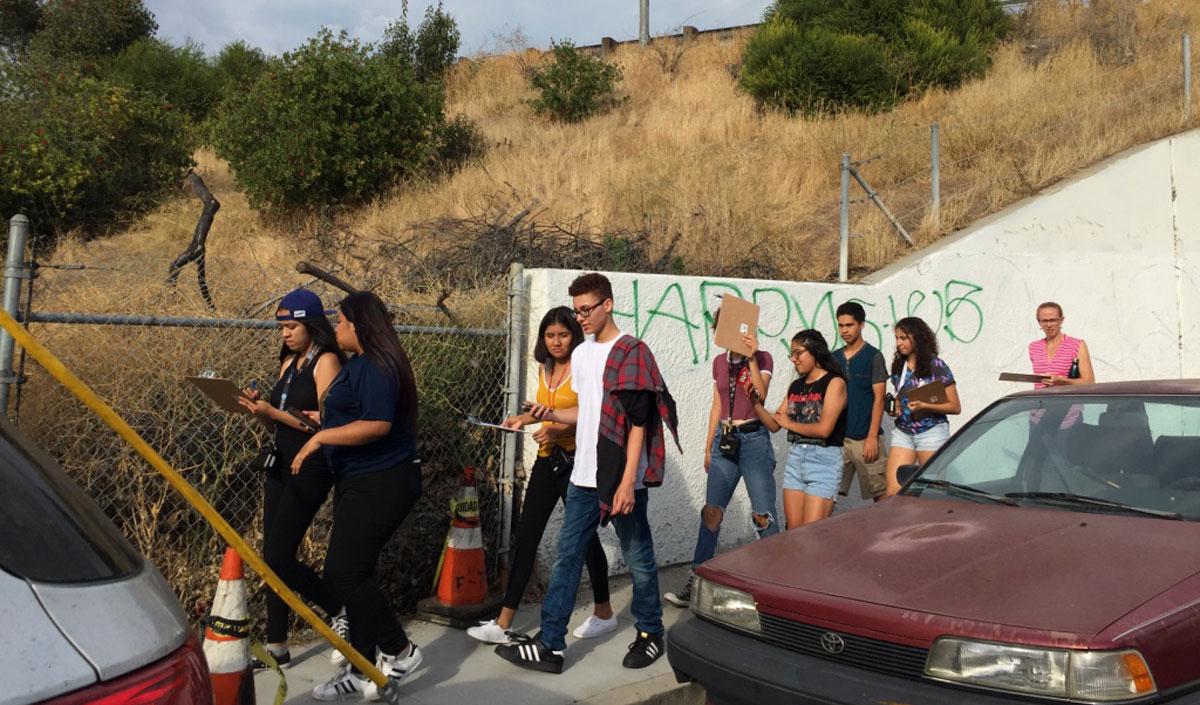
The Community Engagement Program on Health and the Environment (CEPHE) at USC Environmental Health Centers (USCEHC) uses a variety of low-cost air quality instruments and data platforms, including the AirBeam + AirCasting platform, to run participatory air monitoring programs that engage community members around air quality issues where they live, work, and play.
USCEHC collaborates with community-based organizations working in low-income communities of color that face disproportionate environmental burdens from polluting facilities and infrastructures. The aim of USCEHC’s participatory air monitoring programs is to increase the capacity of communities to understand air quality, democratize access to data, and advance environmental justice.
High volumes of vehicular traffic, frequent traffic congestion, and the diesel trucks, trains, and ships that service the Port of Los Angeles/Long Beach - the busiest port in the US - all contribute to the LA metropolitan region’s ranking as one of most heavily polluted areas of the country. Epidemiological research from USCEHC demonstrates the harm regional and traffic-related air pollution has on the health of LA residents and outreach programs run by CEPHE empower local communities to leverage this research to support systemic changes that have improved LA’s air.
One such program, A Day in the Life, empowers youth to tell the story of their own experiences with air pollution by combining AirBeam data with text, photos, and videos. After being trained to use the AirBeams + AirCasting platform, A Day in the Life participants collect data over a one to two week period with the goal of collecting at least eight to ten hours of data on a single day to illustrate their daily exposure to PM2.5. Started in 2017, A Day in the Life has had dozens of youth participate through four community-based organizations, representing nine high schools. Participants have logged nearly 200 AirBeam sessions on the AirCasting mobile app resulting in over 520 hours of particulate matter exposure data collected.
Several youths who participated in the first cohort of A Day in the Life presented at a national conference in 2019 and the program has been featured by the National Institute of Environmental Health Sciences in their monthly newsletter. At the end of the first program year, participants convened for a daylong forum during which they shared their experiences participating in the program and how it impacted them. As one Communities for a Better Environment youth member relates, “I was able to tell my family about this project, I also presented at my environmental engineering class where I talked about my experience with the AirBeam and how, along the refineries, the particulate matter was really high, 40-50 [micrograms per cubic meter] and how bad it is for us in our community to breath all this air because it can cause potential damages such as headaches, nosebleeds, asthma, etc. I want to take action and hopefully share this with a lot more people to show how it is affecting our community.”
Community-based organizations that have participated in and partnered with A Day in the Life include Communities for a Better Environment, LA Grit Media, Promoting Youth Advocacy, Asian Pacific Islander Forward Movement, South Central Youth Leadership Coalition, and Pacoima Beautiful. A Day in the Life is a program of the USC Environmental Health Centers, Community Engagement Program on Health and Environment and was originally conceived by former staff member Zully Juarez and supported by NIEHS grants #5P30ES007048 and #P01ES022845. The program is directed by Jill Johnston and administered by Wendy Gutschow.